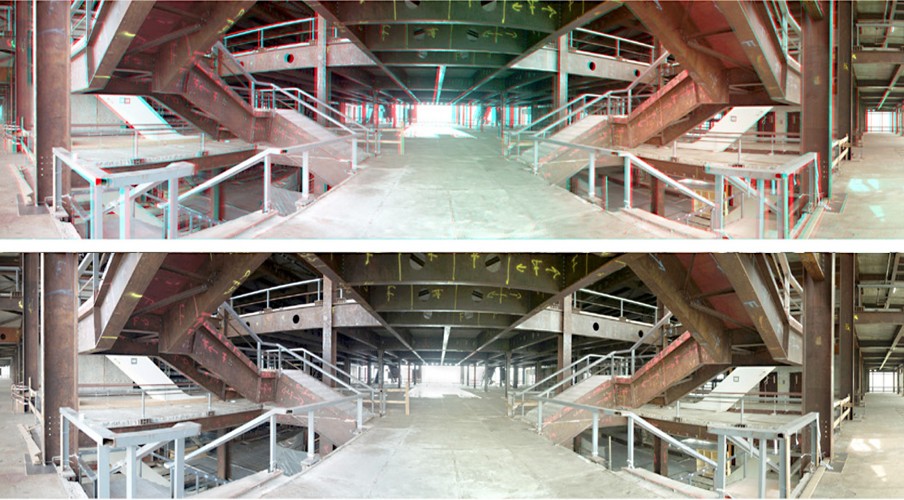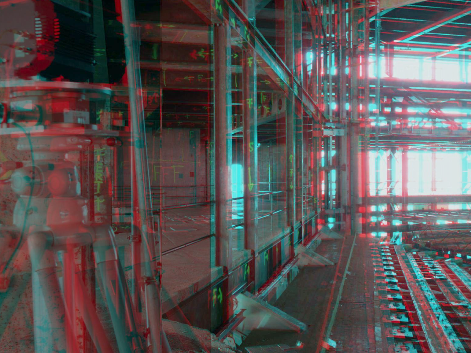
weltraumpalast in 3d
Cooperation with the Deutschen Luft- und Raumfahrtzentrum (DLR) for an art project by Stefanie Bürkle in the Palace of the Republic.
TU professor Stefanie Bürkle wins first prize in “Art and Science” competition
The Palace of the Republic is as naked and empty as it appeared in 2004 in Stefanie Bürkle’s 3D images. With her “Space Palace,” the art professor from the Technical University of Berlin wins first prize in the creative competition “Art and Science” organized by Berliner Wirtschaftsgespräche e.V.. In collaboration with scientists from the Optical Information Systems facility of the German Aerospace Center, Stefanie Bürkle photographed and measured the interior of the Palace of the Republic using a panoramic camera known as the Eyescan M3. A three-dimensional image of the palace was calculated from the scanned spatial data. This not only gives a spatial impression, but also follows a complex, exact calculation of the room. By means of special image acquisition arrangements used in space technology, 360° stereo images can be obtained. The “Space Palace” was presented to the public for the first time in the dome cinema of the Fraunhofer Institute for Computer Architecture and Software Technology, FIRST, under the direction of Prof. Dr. Ing. Stefan Jähnichen, in Adlershof. The Berliner Wirtschaftsgespräche e.V. initiated the creative competition “Art and Science” as part of the Berlin Year of Science “Berlin – Capital for Science”. The three best works were presented and the prize winners introduced at the association’s summer festival on August 28, 2010. Under the patronage of the Governing Mayor of Berlin, Klaus Wowereit, artists, scientists and scholars were called upon to work together on a scientific topic and to use the language of art to make it comprehensible to a broad audience. In total, more than 70 teams accepted this challenge. Stefanie Bürkle, born in 1966, has been Professor of Visual Arts at the Institute of Architecture at the TU Berlin since 2009. As an artist and urban researcher, she explores themes such as “City,” “Artificial Worlds,” “Facade-Wallpaper-Space-Architecture” using various media such as painting, photography, and also a wallpaper production on the Palace of the Republic (www.berlinertapete.de). She reexamines the usual perception of the city through new readings of projection surfaces and the spaces behind them. As most recently in her latest project on the fall of the Berlin Wall: Placemaking – Migration of Spaces (www.placemaking.de).
